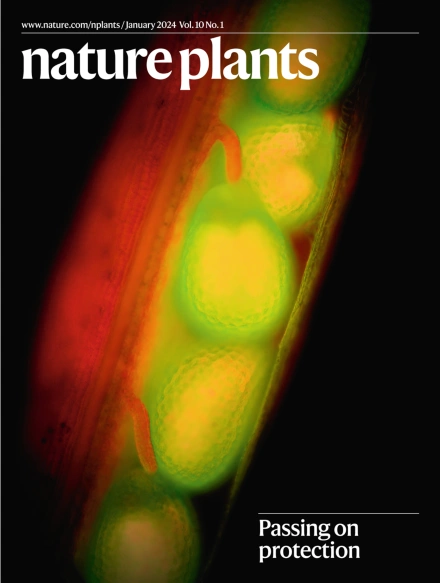Mechanistic insights into DNA damage recognition and checkpoint control in plants
IF 15.8
1区 生物学
Q1 PLANT SCIENCES
引用次数: 0
Abstract
The plant DNA damage response (DDR) pathway safeguards genomic integrity by rapid recognition and repair of DNA lesions that, if unrepaired, may cause genome instability. Most frequently, DNA repair goes hand in hand with a transient cell cycle arrest, which allows cells to repair the DNA lesions before engaging in a mitotic event, but consequently also affects plant growth and yield. Through the identification of DDR proteins and cell cycle regulators that react to DNA double-strand breaks or replication defects, it has become clear that these proteins and regulators form highly interconnected networks. These networks operate at both the transcriptional and post-transcriptional levels and include liquid–liquid phase separation and epigenetic mechanisms. Strikingly, whereas the upstream DDR sensors and signalling components are well conserved across eukaryotes, some of the more downstream effectors are diverged in plants, probably to suit unique lifestyle features. Additionally, DDR components display functional diversity across ancient plant species, dicots and monocots. The observed resistance of DDR mutants towards aluminium toxicity, phosphate limitation and seed ageing indicates that gaining knowledge about the plant DDR may offer solutions to combat the effects of climate change and the associated risk for food security. The plant DNA damage response ensures genomic stability by controlling interconnected networks of DNA repair and cell division proteins. Decoding these networks offers potential solutions to the challenges of climate-related stress and food security.


对植物 DNA 损伤识别和检查点控制的机理认识
植物 DNA 损伤应答(DDR)途径通过快速识别和修复 DNA 损伤来保护基因组的完整性。大多数情况下,DNA 修复与短暂的细胞周期停滞同步进行,使细胞能够在进行有丝分裂之前修复 DNA 损伤,但这也会影响植物的生长和产量。通过鉴定对 DNA 双链断裂或复制缺陷做出反应的 DDR 蛋白质和细胞周期调节因子,我们发现这些蛋白质和调节因子形成了高度相互关联的网络。这些网络在转录和转录后水平上运行,包括液-液相分离和表观遗传机制。令人吃惊的是,虽然上游的 DDR 传感器和信号元件在真核生物中非常保守,但植物中一些更下游的效应器却发生了分化,这可能是为了适应独特的生活方式特征。此外,DDR 成分在古代植物物种、双子叶植物和单子叶植物中显示出功能多样性。观察到的 DDR 突变体对铝毒性、磷酸盐限制和种子老化的抗性表明,获得有关植物 DDR 的知识可为应对气候变化的影响和相关的粮食安全风险提供解决方案。
本文章由计算机程序翻译,如有差异,请以英文原文为准。
求助全文
约1分钟内获得全文
求助全文
来源期刊

Nature Plants
PLANT SCIENCES-
CiteScore
25.30
自引率
2.20%
发文量
196
期刊介绍:
Nature Plants is an online-only, monthly journal publishing the best research on plants — from their evolution, development, metabolism and environmental interactions to their societal significance.
 求助内容:
求助内容: 应助结果提醒方式:
应助结果提醒方式:


